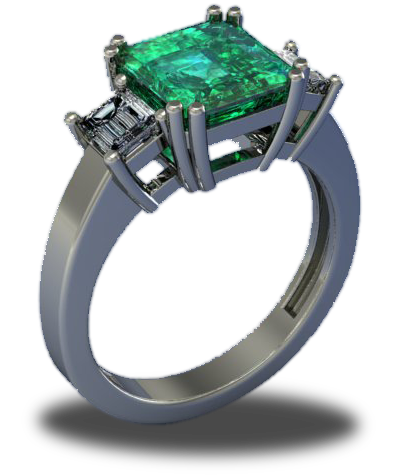
Synthetic emeralds are emeralds that have been grown in a lab. Due to the price of high quality emerald there is strong demand for much more affordable synthetic emerald. A typical synthetic emerald is impossible to distinguish from a natural emerald with the naked eye. A synthetic emerald sells for a fraction of the price of a comparable natural emerald. There are two processes that produce synthetic emerald. The hydrothermal process it the fastest and least expensive process to produce synthetic emeralds. The hydrothermal process was initially used to grow a thin layer of synthetic emerald around an already faceted colorless natural beryl. Today a thin slab of colorless beryl is used to grow synthetic emeralds several millimeters thick. With the hydro thermal process synthetic emerald weighing hundreds of carats can be grown in about a month. Hydrothermal synthetic emeralds are typically easier for a gemologist to separate from natural emerald. The other process used to grow synthetic emerald is the flux process. Flux grown emeralds were first commercially marketed in 1938. Flux grown synthetic emeralds can take several months to grow. Flux grown emeralds can be much more difficult to separate from natural emeralds than typical hydrothermal emeralds. Synthetic emeralds provide a far more affordable option for someone that wants fine emerald jewelry without the fine emerald price tag.
